Today we have the launch of the 11th Gen Intel Core Desktop Processors, codenamed Rocket Lake-S. Benchmarks and reviews are still under embargo, but we will cover those as well. There are sites like Anandtech and Hardware luxx that have already purchased and benchmarked the Core i7-11700K. Still, today we are able to go over some of the specifics of the chips.
11th Gen Intel Core Desktop Processor Rocket Lake-S Launch
The big changes in this generation are that we get new processor cores that help get up to a 19% IPC boost. That is fun since AMD also claimed 19% for its AMD EPYC 7003 “Milan” over the EPYC 7002 “Rome”. We also get Intel Xe graphics integrated and DL Boost to the solution, but let us get into more details.
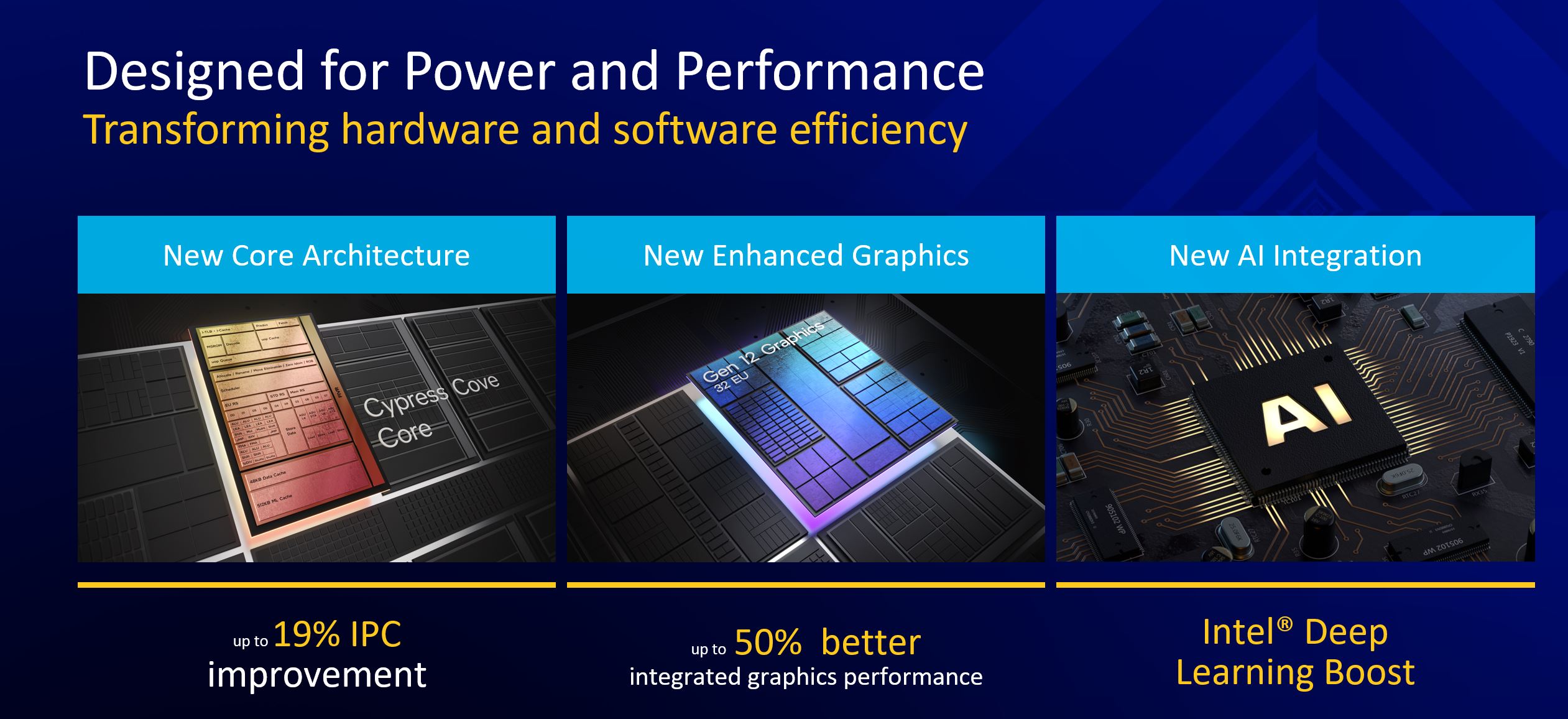
One of the other big features of the chip, that we have not discussed is the 20x PCIe Gen4 lanes. This is significant since that is a PCIe Gen4 x16 link from the CPU for a GPU and an extra x4 to a NVMe SSD. We also get features such as VNNI for inferencing, DDR4-3200 which we saw on Cooper Lake from Intel, new media decoding capabilities, and a few more features.
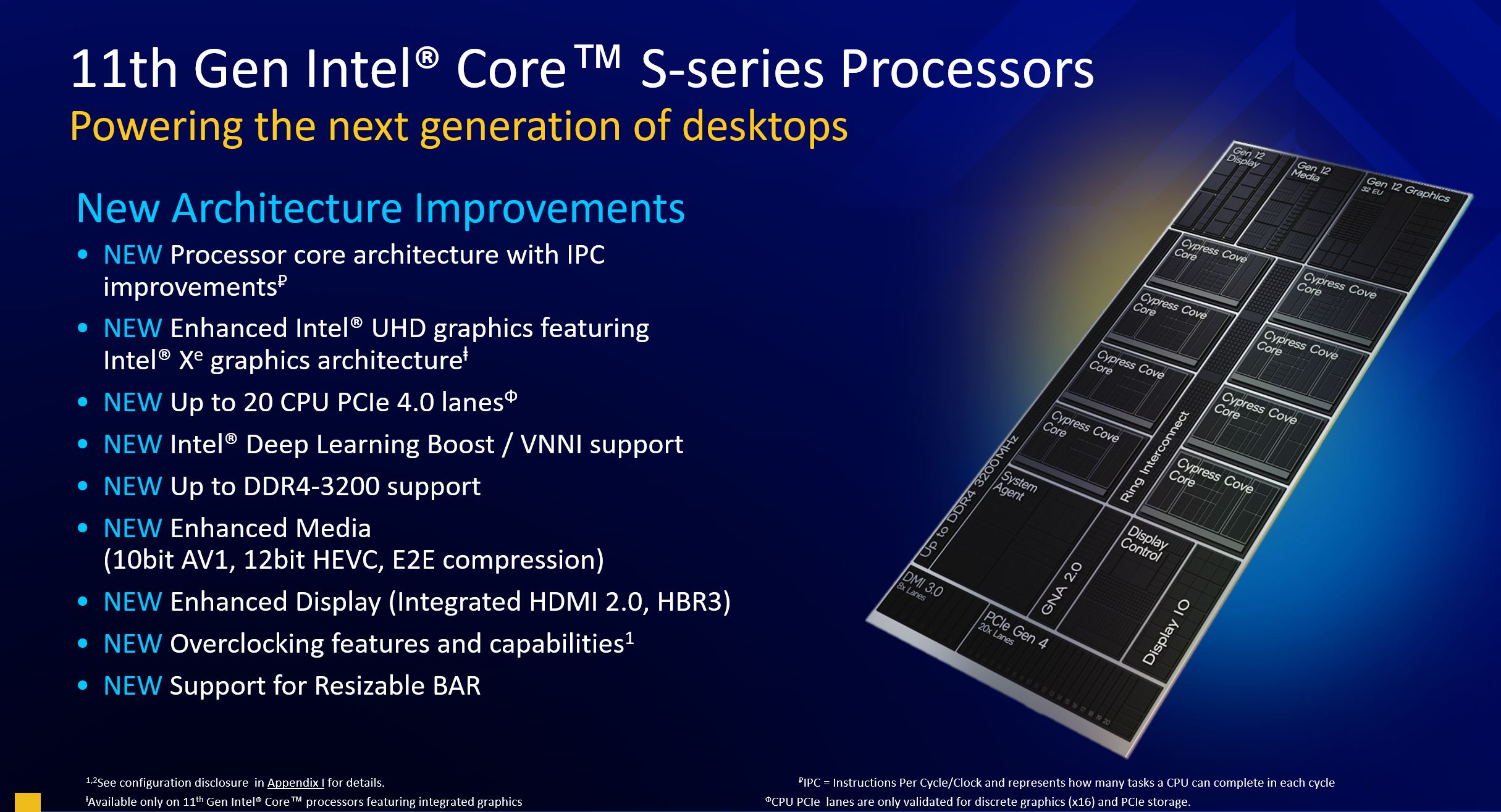
One of the stranger parts of this launch is that the Intel Z590 chipset motherboards were launched closer to CES 2021 in January, but the chips are arriving months later. There are a number of features here. The three highlights are an x8 DMI Gen3 connection to the CPU, USB 3.2 Gen 2×2 20Gbps (everyone loves the trainwreck that is USB naming), and perhaps more excitingly support for 2.5Gbase-T Ethernet. If you were wondering when we are going to see 2.5GbE, this is a strong indicator.
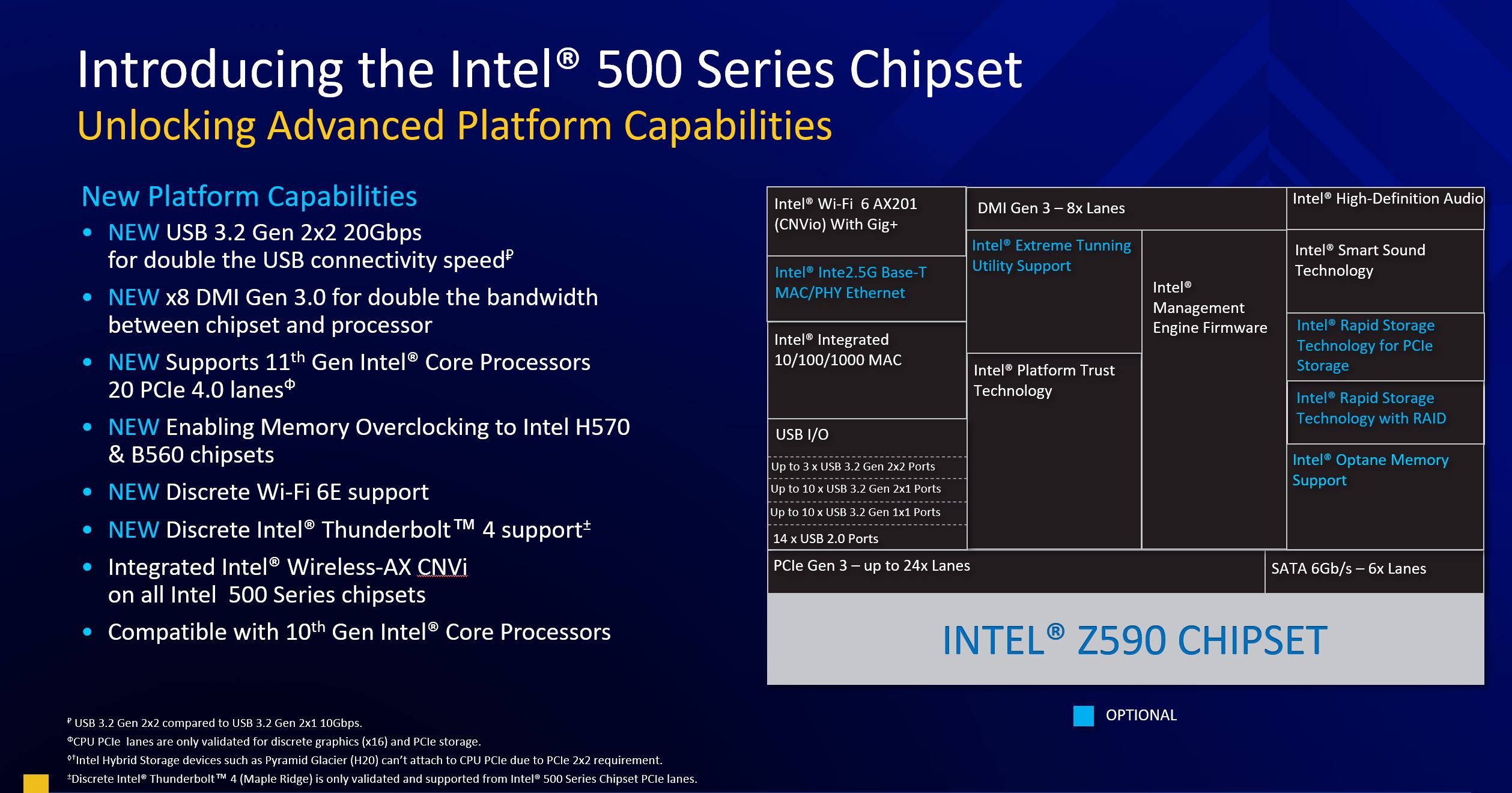
We are going to save more for our formal review. Still, it is worth at least talking SKU lists.
11th Gen Intel Core Desktop Processor Rocket Lake-S SKUs
On the SKU side, there are a few points we wanted to cover. Namely, we have a maximum of 8 cores in this generation, down from 10 in the previous generation. Those 8 cores can hit over 5GHz.
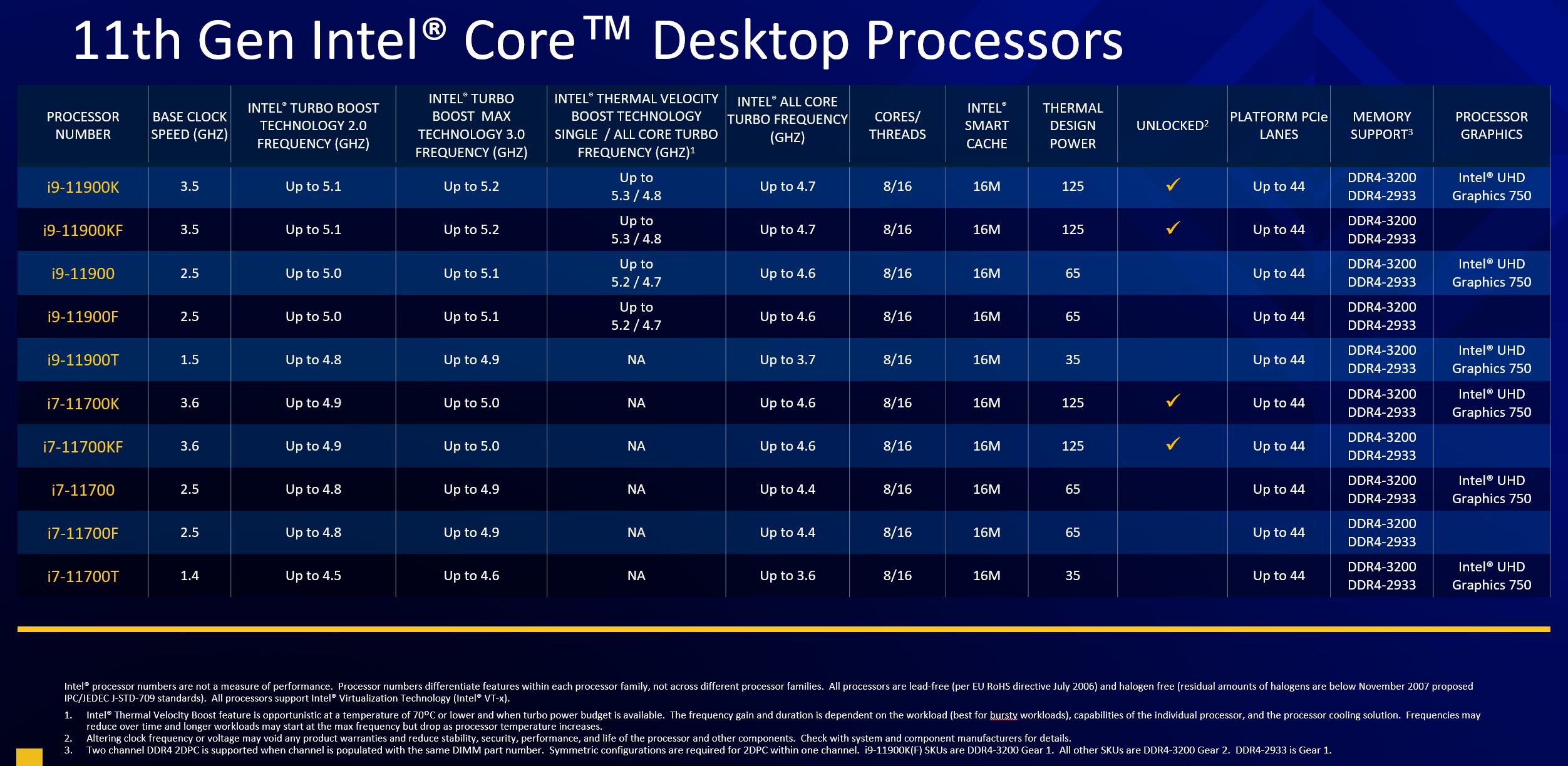
One of the big reasons for the 8-core only on a desktop/ gaming segment is that the new Intel Xe graphics take up so much die space Intel could only fit 8 cores. This is going to be one of the few cases of core count contraction. For the gaming market, this does not make a lot of sense if one is going to have a dGPU anyway. Effectively that extra die space is wasted. Where it is more interesting is in the lower-power “T” SKUs. Those are the SKUs we find in the Project TinyMiniMicro ~1L PC segment. There, Xe will bring a major boost to graphics and we can see the “T” parts on the SKU list.
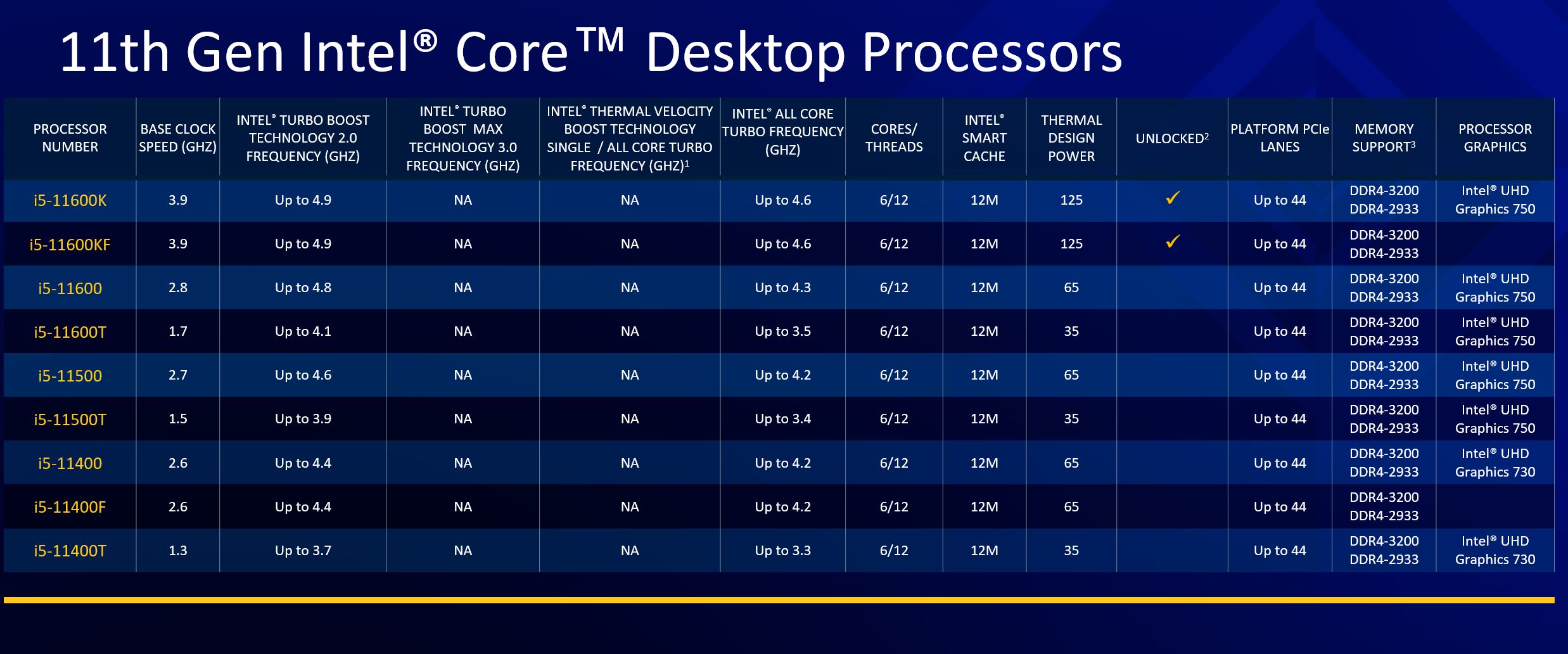
Another interesting note is that Intel is refreshing the lower-end Core i3 and below segment with 10th gen parts.
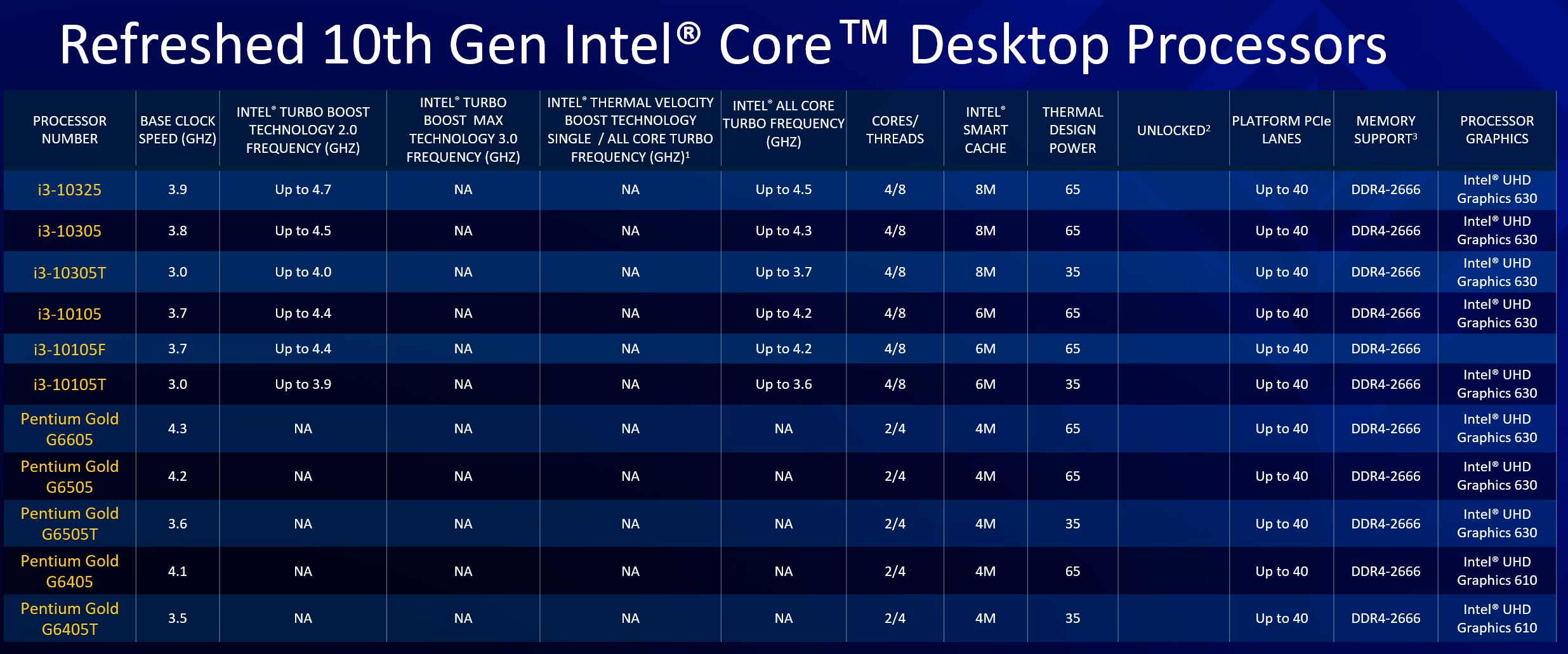
This is very similar to what we saw with the EPYC 7003 “Milan” launch where the low-end was still serviced by the previous-generation parts that are socket compatible. Perhaps this is a new industry trend?
Final Words
We will have more on Intel’s latest generation of processors later this month when the review embargo lifts. Intel needed an answer for the AMD Ryzen 5000 series, and this is it until we see Alder Lake-S. Our sense is that this is going to be the top Intel offering in the segment through the summer.

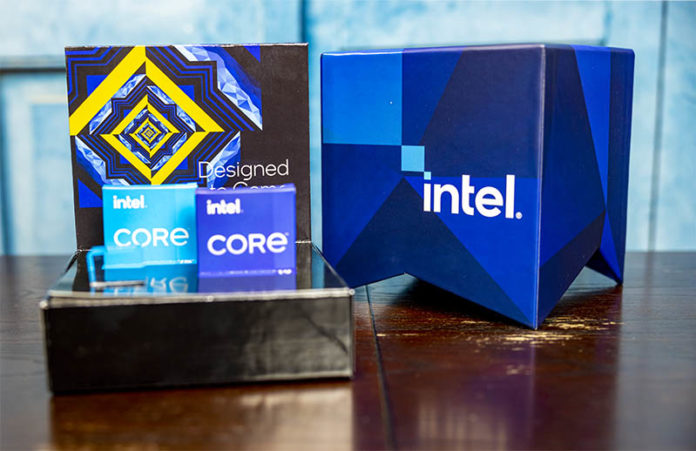
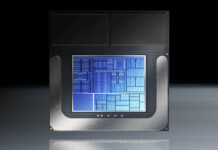


…There are sites like Anandtech and Hardware luxx that have already purchased and benchmarked the Core i7-11700K…
Thank you for saying so right up front.
11th gen is a bad band-aid from a technological viewpoint but I’m sure they will sell a lot of them. No need to worry for INTEL, with their momentum and financial power they can fool around for several years to finally come up with a kiss-ass architecture. They have the advantage in terms of the attrition war with AMD and ARM.
Meanwhile I’ll be waiting for Zen 3 Threadripper and then watch for Zen 4 vs. Alder Lake.
domih – I know Andreas and Ian so happy to point to their work. No point in pretending it has not happened even if we are going to have numbers on different SKUs at some point.
Patrick – The STH article mentions them, other sites do not and just repeat the INTEL gospel with no annotation, so you’re doing a better job, kudos :-) That’s why I like STH.
Did you also hear anything about Xeon entry level CPU’s based ons this architecture?
On earlier roadmaps I’ve seen ‘tatlow’ but I haven’t read anything recent on that cpu.
“For the gaming market, this does not make a lot of sense if one is going to have a dGPU anyway.”
For the TGL chips we saw announcements of support for an Intel media sdk feature they called Deep Link, which enabled use of both a discrete and integrated Intel GPU.
Has there been any announcement that this support will be enabled for Rocket Lake?
Maarten – since Intel is suppose to release a W580 chipset in April I assume that they will also release a successor to the Xeon W-1200 series so that we get entry level Xeons with ECC support together with W580 motherboards with PCIe 4.0 and DMI x8 link.
Can anyone confirm that W580 and Xeon W-1200 successor will be released in April?
“This is going to be one of the few cases of core count contraction. For the gaming market, this does not make a lot of sense if one is going to have a dGPU anyway. Effectively that extra die space is wasted.”
Intel’s laptop chips typically do double duty as desktop chips. So this usually makes sense, as its not worth taping out a whole new die just for desktop.
But this time around, they don’t. Anything that needs power efficiency is going to use Tiger Lake. And they have a low end dGPU to pair with it anyway, and last gen chips will cover the “it needs a display output” market until Alder Lake.
So… yeah, that iGPU is a rather curious inclusion.
I was looking at this again to ask about the W580, and I see I’m not the only person curious about it. 3200 or higher with ECC would be kind of nice for the home server In trying to put together. Is it wrong to wish overclocked ECC memory was a thing that existed?
iGPUs are kind of useless for gamers and a waste of die space, but if you leave it enabled in standby in the UEFI Quick Sync is very nice for random video transcoding jobs. And for troubleshooting when things go wrong. Not needing an entry level GPU in the current environment is nice, too. It’s sort of like having a crappy spare tire in the trunk of your car.